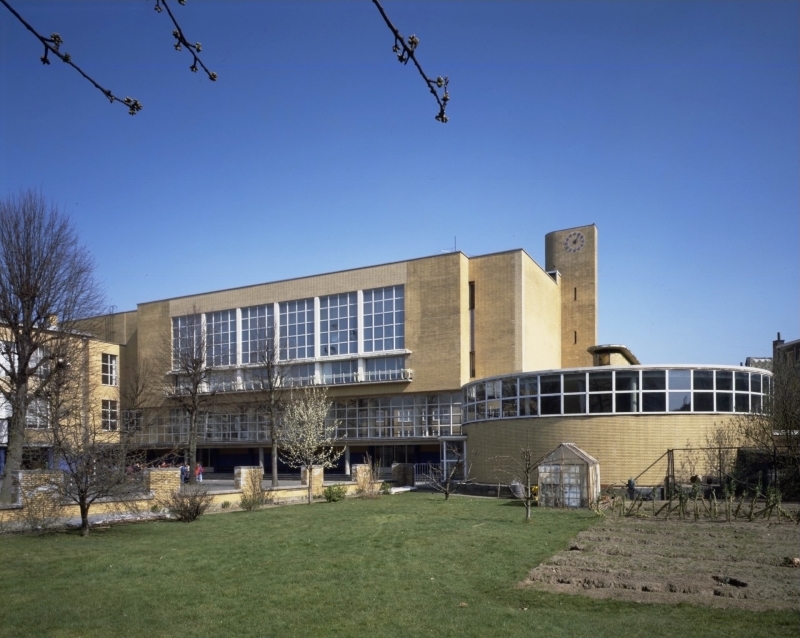Avant-garde and tradition in the inter-war architecture in Belgium
Belgian architecture was in the years 20-30 in the shadow of a stormy international movement. It was quieter, more subdued, perhaps more linked to tradition and less propaganda. It’s lesser known ….
(autotranslated) Why we want to dedicate to the Belgian architectural contribution in the interwar period a cycle. Of course, even offer a cycle of lectures, no complete overview of this important period in the Belgian architecture. But for those who want to delve into the history of 20th century architecture in Belgium forms the cycle definitely a must.

The historiography of the Modern Architecture has long been confined to the history of the avant-garde of the twenties: Le Corbusier, Walter Gropuis, Ludwig Mies van der Rohe, Gerrit Rietveld, … Victor Bourgeois, Louis-Herman de Koninck, Huib Hoste (at least his work in the “International Style”) …. In some cases this history even an outright defense of the Modern Architecture: Siegfried Giedeon, Nikolaus Pevsner … (“surgical history” Italian architectural historian Manfredo Tafui would call that later).
But with the crisis and criticism of modern architecture since the late sixties (… the history of the “postmodernism”), the need has arisen this “official” history to rewrite the Modern Architecture (a kind of revisionism in positive sense so …). For example, modern architecture was rediscovered in the tension between modernity and tradition: Le Cobusier and traditional, folk and classical architecture, Mies van der Rohe and classicism Karl Friedrich Schinkel …. Also the interest in the development of a non-modern architecture in parallel with the modern architecture of the avant-garde grew (from the traditionalist reconstruction after the First World War in Belgium until the “revaluation” of the “Nazi-classicism” of Albert Speer …)
An interesting chapter in the architectural history of the interwar period is the “silent modernism” of the thirties, also called the “moderate” or “other modernism”: it is created from about 1928 as a “business” response to the noisy, radical modernism of the avant-garde at that time, “raged” seems to be (because while institutionalized: CIAM, La Cambre …). That’s particularly been the case in Belgium in the work of Edward van Steenbergen, Paul Smekens, Schellekens Joseph, Jules Lippens, Pierre Verbruggen Marnix Neerman, Joannes De Bondt … with the late “modern” Henry van de Velde, 1926 active again in this country, as a reference. This particular part of the history of twentieth-century architecture in Belgium comes in this lecture series on the “Silent Modernism” implementation discussed, as a necessary complement and correction of our still too one-sided image of recent architectural history.
Luc Verpoest
Luc Verpoest ir. Architect K.U. Leuven 1969, doctorate in applied sciences KU Leuven since 1984. Has 69 independent architect. In 70-73 he was consulting ir. Architect in Kinshasa (Congo). Since 69 he is also affiliated with the Department of Architecture and Urban Planning KU Leuven. Since 91 he is a senior lecturer.
Luc Verpoest continued working as a publicist, editor of the magazine A +; member of the Provincial Commission for Monuments and Sites, Province of Brabant, teacher Amaranth, Ghent, Belgium DO.CO.MO.MO coordinator (International Working – Party for Documentation and Conservation of Buildings, Sites and Neighbourhoods of the Modern Movement), member of ICOMOS (International Council on Monuments and Sites)
